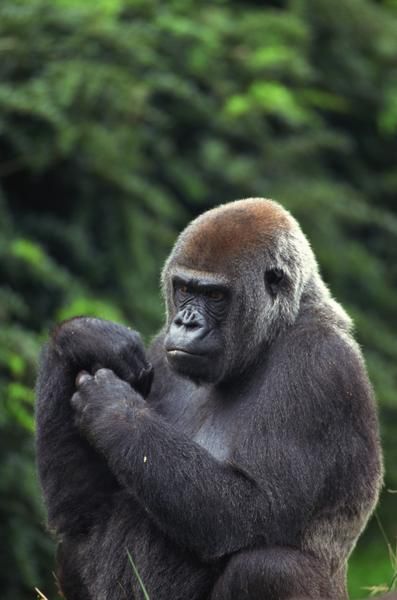Dear Integral Meditators,
Mindfulness is a process that can be equally applied to dynamic action and contemplative reflection. The article below explores how you can combine active and passive forms of mindfulness into a four stage ‘engaged mindfulness’ practice.
Wishing you all the very best,
Toby

Mindfully dancing between doing and being (the four stages of engaged mindfulness)
Engaged mindfulness can be distinguished from mindfulness in general in that it is specifically designed to help us bridge the gap between ‘doing’ and ‘being’ in our life, or our passive-reflective modes and our active-dynamic modes. It can be summarized in a four-stage cycle that we can apply to any situation and circumstance. The first two stages are primarily observational, whereas the second of the two stages are often more dynamic and action based.
The four stages are as follows:
Awareness – The first stage is primarily observational, we are committing to becoming as aware as we can of what is happening in this situation, both within ourselves, and in the environment.
Acceptance – The second stage involves accepting the reality of what we find as wholly as possible, even if that reality is in conflict with what we want to be there.
Respons-ibility – At this stage, having brought ourselves to accept fully the reality that we find ourselves in, we then practice taking mindful responsibility for our role in the situation; ‘What is it that I need to take responsibility for here, in a way that will be most beneficial for both myself and others?’
Assertion and/or action – Having become aware of and accepting of the situation as we are able, and having taken responsibility for our role, the final stage of engaged mindfulness involves asking the question ‘What is it (if anything) that I need to do here? We then take action according to the answer to this question.
We can apply this four-stage process to any circumstance. It can be with regard to our inner world of thoughts and feelings, or to do with our outer world of relationships, work and value exchanges with our environment.
An example – requesting payment
Recently I decided I needed to address the issue of outstanding payments from clients from last year (start the year of the Rooster with a clean slate so to speak). I was aware that I did not feel entirely comfortable making this request, so I did the four-stage process:
What do I need to be aware of here? – Literally people owe me money, emotionally I feel a little uncomfortable asking for it, as well as feeling a little annoyed that they haven’t paid yet. I’m also aware of the immanence of certain bills that need to be paid at the end of this month….
What is it that I need to accept? – One main dimension that I discover I need to accept is my emotional discomfort about the situation. In order to deal with it effectively I need to be ‘comfortable with the discomfort’ of the emotions present.
What do I need to take responsibility for here? – Clearly no one else is going to do the awkward task of asking for the money, and no one is going to take care of my awkward emotions, it has to be me, this is my responsibility and there is no-one coming to ‘save’ me!
What do I need to do? – In this situation, I need to clearly take care of my emotions, and write the emails. Based upon having done this I can then relax and rest at ease with the situation, knowing I have done what I am capable of doing as far as I am able.
As mentioned at the beginning, engaged mindfulness is designed to help us create a mutually supportive and re-enforcing dynamic between our modes of doing and being, or reflection and action. This week you might like to apply the four stages mindfully to a couple of your daily challenges, and see how it changes your experience.
© Toby Ouvry 2017, you are welcome to use or share this article, but please cite Toby as the source and include reference to his website www.tobyouvry.com
Special 1:1 Coaching Offer at Integral Meditation Asia in January
The beginning of the year can be a great time to spend quality time on getting your mind, body and heart prepared for the challenges you are facing as the year progresses. With this in mind I will be offering a special 20% discount offer on all 1:1 meditation and mindfulness coaching services for the month of January at Integral Meditation Asia. This is a saving of Sing$120 if you book as set of 3x 60minute sessions, or Sing$44 per single session…click HERE for full details!
Upcoming Courses at Integral Meditation Asia
Starts Tuesday and Wednesday January 10th/11th 2017 – Transformation through mindful intention –a three module meditation course
Ongoing on Wednesday’s, 7.30-8.30pm – Wednesday Meditation Classes at Basic Essence with Toby
Ongoing on Tuesday evenings from November, 7.30-8.30pm – Tuesday Meditation Classes at One Heart with Toby (East coast)
Ongoing Mondays & Thursdays – Morning integral meditation classes with Toby
Saturday 4th February, 9.30am-1pm – The six Qi gong healing sounds: Qi gong for self-healing & inner balance workshop
Saturday 25th February, 10am-5pm – An Introduction to Meditation from the Perspective of Shamanism
Saturday 4th March, 10am-5pm – Meditation from the Perspective of Shamanism Level 2 – Deeper into the Shamanic journey
Integral Meditation Asia
Online Courses * 1:1 Coaching * Books * Live Workshops * Corporate Mindfulness Training *Life-Coaching * Meditation Technology


 Tom and Jerry Mindfulness (Cartoon Character Positive Attitude)
Tom and Jerry Mindfulness (Cartoon Character Positive Attitude)





